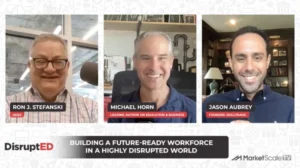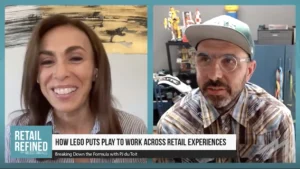Leveraging UDR—A Profitable Yet Untapped Metric for Brick and Mortars
A boutique commerce innovation firm for retail, CPG and food service, HighStreet Collective focuses on helping these businesses move at the speed of customers in an omnichannel world.
And on today’s video stream episode, HighStreet Co-Founder Ed King joins MarketScale Insider Geoffrey Short to discuss the latest retail experience trends that are surfacing as we move into the new decade.
With legacy retailers like Sears and Kmart closing their doors, more and more brick and mortars have embraced the new frontier of retailing—the experience—as a way to drive more traffic through their doors. Yet, even ‘the experience’ is evolving.
“Well, I think as an industry, we finally evolved from the Instagrammable moments,” states King. “I think it was hot for a few years, and it served its purpose; and it did get some social media mentions and things like that. But I think we’ve evolved now to more of a profit-based mentality.” He goes on to say, “The experience is critical, it’s important—everybody knows it’s really, really important. But also, marrying that with real business metrics is key, and I think we’re seeing more and more of that—especially as you see some retailers go under and declare bankruptcy. I think the other retailers are waking up and seeing, well, you know, experience for the sake of experience is probably not a good strategy. We’ve got to be able to balance it with a real business case.”
While KPIs are key for clients, they change from client to client and need to need. So HighStreet has developed testing methodology within their Living Retail Lab that quantifies a true and common metric among brands—Unrealized Dormant Revenue (UDR)—in other words, how much money retailers are leaving on the table with every customer visit.
“Once we can quantify that through the testing methodology that we developed, we’re able to project a good business case to say, ‘Hey, if we’re to implement this kind of experience in one store, it’s going to result in a 13¢ increase in your ticket for every visit.’ Well, you extrapolate that out to how many days a week, how many days a year, and how many stores—that’s a lot of money,” says King. “When it gets down to like what are the true KPIs, sure, sales per square foot, obviously; but you know, evolving into a more specific wide-driven metric like UDR—Unrealized Dormant Revenue—that’s what we’re finding is getting the attention of a lot of retailers right now.”
Watch the full interview to hear more of Ed King’s thoughts on how store closures can present a real opportunity for these companies to repurpose their business model and ‘rise above the ashes’, why tactile and emotional components ensure the future of brick and mortars, and how startups like Muji and Rough Trade Records are generating customer visits through the creation of an in-store physical manifestation of their brand. And be sure to check out MarketScale’s Retail Industry page that features videos, podcasts, blogs and more covering all things retail.








